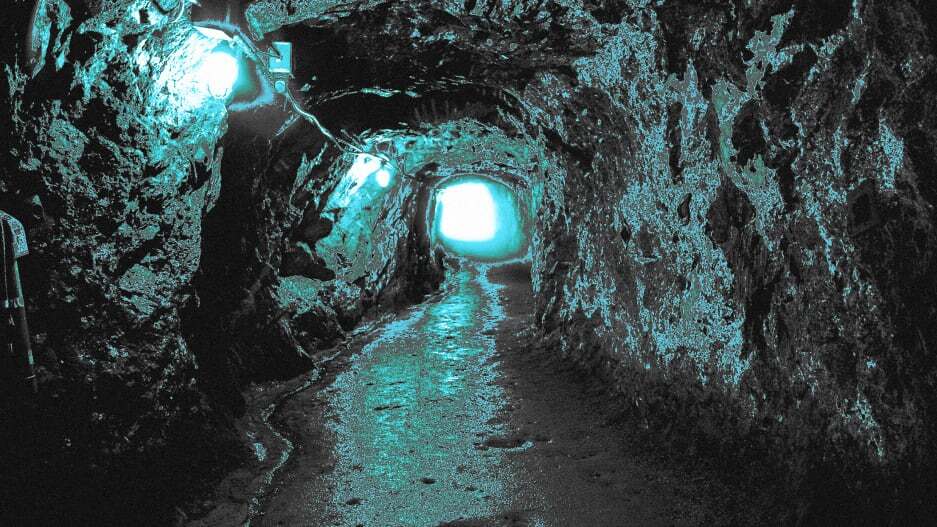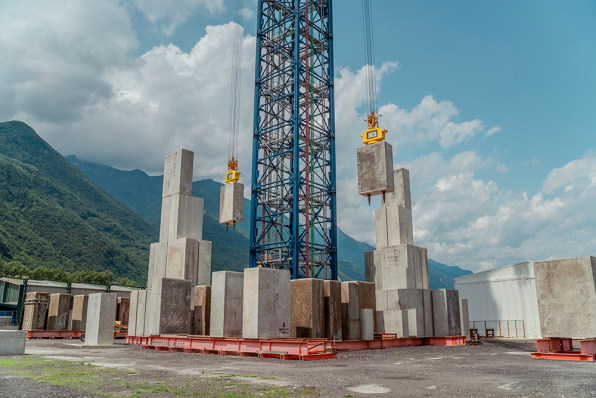- | 10:00 am
Scientists want to store renewable energy in abandoned mines
There are 500,000 disused mines in the U.S. For one team of scientists, turning them into ‘gravity batteries’ could be the key to a faster clean energy transition.

When it comes to the state of renewable energy today, the problem is somewhat simple. On a blue-sky day, solar farms can generate enough energy to power thousands of homes, and on a gusty day, wind farms can generate enough energy to light up entire neighborhoods. But when the night falls, and the wind dies down, these farms just have to wait for another bountiful day. All of this means that cities can’t rely on a constant, reliable supply of renewable energy—unless we figure out how to bottle it up for a rainy day, or at the very least for longer than a few hours at a time.
Last year, a team of researchers from the International Institute of Applied Systems Analysis in Austria proposed that elevators in high-rise buildings could generate electricity as they descend, weighed down by heavy payloads like big containers of sands. The idea was that when the building receives more green energy than it needs to operate, that excess energy would be put to good use. When the building doesn’t get enough and therefore needs more energy, the elevator would travel back down and convert that kinetic energy to power generators, similar to how “regenerative braking” works in electric cars.
In a new study, published in the journal Energies, the same team is now considering a similar principle but at an even grander scale: disused underground mines. Like the building elevators proposed in the previous study, the underground system would rely on an array of vessels hoisting containers full of sand along existing mine shafts. The sand would be unloaded onto conveyor belts at various levels inside the mine, then eventually removed using excess energy during peak hours. In the energy space, this is known as a gravity battery. As the name suggests, these batteries rely on Newton’s trusted logic that “what goes up must come down” to convert the potential energy of an object into electricity.
By some estimates, the U.S. is dotted with about 550,000 abandoned coal mines, but these can be found all over the world, from China to Africa, Saudi Arabia, and Japan. The idea is in its very early stages, and Julien Hunt, a researcher in the IIASA Energy, Climate, and Environment Program and the lead author of the study, acknowledges that many of those mines wouldn’t be suitable for such a conversion. But if the concept ever materializes, it could be help solve the next big challenge in the race towards net zero: storing energy.
Today, burning fossil fuels is our go-to solution for energy. The most popular storage option for renewable energy remains lithium-ion batteries like the ones that power our phones and electric vehicles, but they can only last for about four hours of maximum output, and are notorious for catching fire. Research is advancing in other technologies, like flow batteries and hydrogen, but the former isn’t all that efficient for now, and the latter is still considered, well, a contentious topic. “It is the gas industry’s plan that there will always be a need for gas to fill the gaps in renewables because they’re intermittent,” says Seth Mullendore, the president and executive director of Clean Energy Group, a nonprofit organization with a mission to speed up equitable transition to clean energy. “In order to eliminate that need, we probably need something more than lithium-ion batteries,” he adds.
This is where gravity batteries could come into play. A version of this technology already exists in the form of pumped-hydro energy storage systems, which have been used for about a century. Think of it as a giant version of those closed-loop water fountains you can buy for your garden, but a lot more productive. As water drops from a high elevation, it spins turbines and generates electricity; when excess energy is available, the water is pumped back up and the process begins all over again. “It’s pretty cost-effective and can be built at massive scales,” says Mullendore. “But we can only put that in so many places and there are environmental impacts that go along with creating big reservoirs [that can affect] ecosystems.”

Today, there are other players in the gravity battery space: in Scotland, Gravitricity has built a steel tower for a 50-ton iron weight to travel up and down it (though they’re scoping out decommissioned coal mines as well). And in Switzerland, Energy Vault has built a 20-story building with AI-controlled cranes lifting and dropping 60-ton blocks. Leveraging existing mine shafts, however, could eliminate the need to build such complex infrastructures from scratch.
In this scenario, the underground mines, which are dubbed Underground Gravity Energy Storage systems, would be paired with a solar or a wind farm and store the excess energy that would otherwise go to waste. The researchers estimate that one 10-megawatt storage system could supply energy for about 10,000 average houses. Mullendore says that’s not an extraordinary amount given that some the larger lithium-ion batteries can generate 100 megawatt hours or more, but of course, these batteries only last four hours before they have to be recharged, not to mention the decline in efficiency.
By comparison, Hunt notes an underground gravity system “should be designed to store 1,000 to 10,000 hours of energy,” but it would only be viable on a seasonal basis. “It would store energy all the time during the summer, and it would generate electricity all the time during the winter,” he says. The study claims the process would be 80% efficient, namely 80% of the energy that’s put into storage could be taken back out, but Mullendore says that seems “optimistic.”
Naturally, the deeper and wider the mineshaft, the more power can be extracted from the plant, and the larger the mine, the higher its storage capacity. Mine shafts with a depth under 200 meters (about 650 feet) don’t make sense, says Hunt, and neither do mines that are prone to floods where the water table is so high. What does make sense is the undeniable fact that gravity is a constant on Earth, and that our planet is littered with decommissioned mines.
All we have to do is figure out a way to clean them up properly. “My biggest concern was that old mines can be a big source of methane leakage, both on safety and climate side” says Mullendore. The problem, then, becomes about weighing the benefits of using these for energy storage with the benefit they could have on the environment if they’re properly sealed. “Maybe you can do both,” he says, “and that can be a first step.”





































